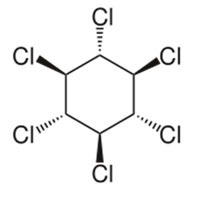 What is Lindane?
What is Lindane?
Lindane is a colorless solid with a musty odor; pure material is odorless. Used as a pesticide and scabicide (a drug that destroys the itch mite causing scabies).
Uses
In the US, lindane was previously used singly as a pesticide active ingredient until phasing out in 2007. It was also used in combination with four other hexachlorocyclohexanes in a pesticide called BHC, which was discontinued in the 1970s. While it is no longer used in the US as a farm pesticide, it may still be used as such in other countries. Lindane is an ingredient in medical shampoos used to treat head lice and scabies.
Sources & Potential Exposure
Because lindane is no longer produced or used in the US, occupational exposure is not expected in the US. However, since lindane may remain in the environment and the food chain, the general population may still be exposed to lindane from ingestion of food, and to a lesser extent, ingestion of drinking water and inhalation of air. Exposure to limited populations will occur when using medical shampoos containing lindane. Lindane that has been released to the environment, continues to be broken down slowly in air by reaction with hydroxyl radicals. It will be in or on particles that eventually fall to the ground. It will volatilize into air from moist soil and water surfaces. It is expected to move slowly through soil. It will be broken down very slowly by microorganisms.
Federal Regulations
The U.S. EPA IRIS program determined that technical HCH (which includes lindane) is a probable human carcinogen based on sufficient evidence in animals, but there is no separate entry for lindane.

 Americas
Americas Europe
Europe Français
Français Deutsch
Deutsch Italiano
Italiano Español
Español



